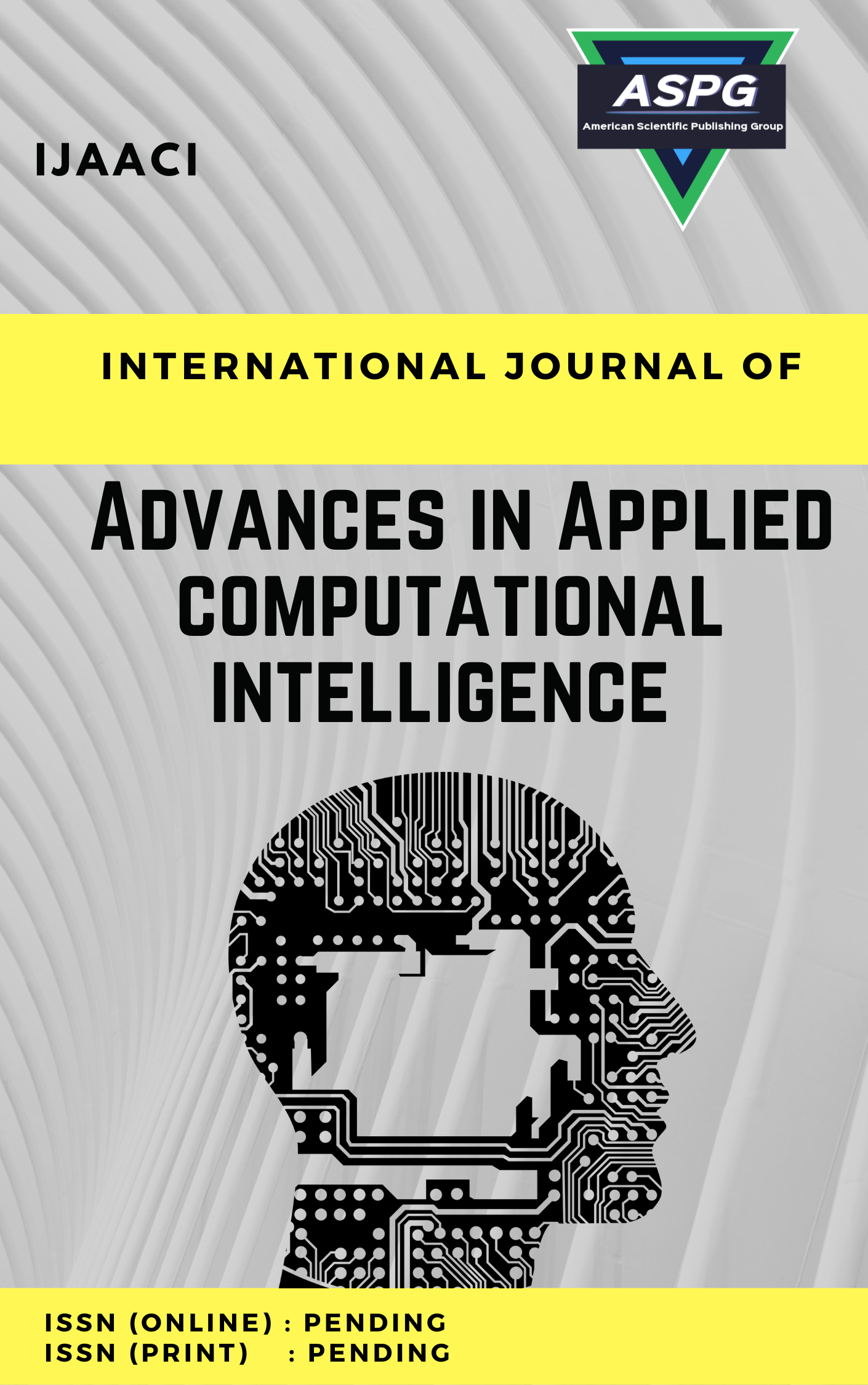

Volume 3 , Issue 2 , PP: 18-28, 2023 | Cite this article as | XML | Html | PDF | Full Length Article
Alber S. Aziz 1 * , Haitham Rizk Fadlallah 2
Doi: https://doi.org/10.54216/IJAACI.030202
Hepatitis C Virus (HCV) is a worldwide epidemic. The World Health Organization estimates that annually between 3 and 4 million instances of HCV are recorded. People with HCV would benefit from knowing their illness stage earlier thanks to accurate and timely prognoses. Different noninvasive blood biochemical indicators and patient clinical data have been utilized to determine the disease phase. As a substitute for the invasive and sometimes harmful liver biopsy, machine learning approaches have shown useful in diagnosing each phase of this chronic liver disease. To accurately estimate HCV using sparse weather information, this work offers two machine learning (ML) methods: The Support Vector Machine (SVM) and a simple tree-based ensemble approach called Extreme Gradient Boosting (XGBoost). The two models are applied to real-world data on HCV. The dataset contains 13 variables and 615 cases. The results showed the SVM achieved more accuracy than the XGBoost. The SVM gets 93.5% accuracy and XGBoost gets 90.23% accuracy.
Machine Learning (ML) Models , Hepatitis C , Prediction , Support Vector Machine (SVM) , XGBoost.
[1] S. M. Abd El-Salam et al., “Performance of machine learning approaches on prediction of esophageal varices for Egyptian chronic hepatitis C patients,” Informatics Med. Unlocked, vol. 17, p. 100267, 2019.
[2] A. Akella and S. Akella, “Applying machine learning to evaluate for fibrosis in chronic hepatitis c,” MedRxiv, pp. 2011–2020, 2020.
[3] D. Chicco and G. Jurman, “An ensemble learning approach for enhanced classification of patients with hepatitis and cirrhosis,” IEEE Access, vol. 9, pp. 24485–24498, 2021.
[4] S. C. R. Nandipati, C. XinYing, and K. K. Wah, “Hepatitis C virus (HCV) prediction by machine learning techniques,” Appl. Model. Simul., vol. 4, pp. 89–100, 2020.
[5] K. S. Bhargav, D. Thota, T. D. Kumari, and B. Vikas, “Application of machine learning classification algorithms on hepatitis dataset,” Int. J. Appl. Eng. Res., vol. 13, no. 16, pp. 12732–12737, 2018.
[6] S. Hashem et al., “Comparison of machine learning approaches for prediction of advanced liver fibrosis in chronic hepatitis C patients,” IEEE/ACM Trans. Comput. Biol. Bioinforma., vol. 15, no. 3, pp. 861–868, 2017.
[7] A. A. Malik, W. Chotpatiwetchkul, C. Phanus-Umporn, C. Nantasenamat, P. Charoenkwan, and W. Shoombuatong, “StackHCV: A web-based integrative machine-learning framework for large-scale identification of hepatitis C virus NS5B inhibitors,” J. Comput. Aided. Mol. Des., vol. 35, pp. 1037–1053, 2021.
[8] I. E. Weidlich et al., “Inhibitors for the hepatitis C virus RNA polymerase explored by SAR with advanced machine learning methods,” Bioorg. Med. Chem., vol. 21, no. 11, pp. 3127–3137, 2013.
[9] T. M. Ghazal, “Hep-pred: hepatitis c staging prediction using fine gaussian svm,” Comput. Mater. Contin., vol. 69, no. 1, pp. 191–203, 2021.
[10] M. A. Konerman, Y. Zhang, J. Zhu, P. D. R. Higgins, A. S. F. Lok, and A. K. Waljee, “Improvement of predictive models of risk of disease progression in chronic hepatitis C by incorporating longitudinal data,” Hepatology, vol. 61, no. 6, pp. 1832–1841, 2015.
[11] T. C. Feldman, J. L. Dienstag, K. D. Mandl, and Y.-J. Tseng, “Machine-learning-based predictions of direct-acting antiviral therapy duration for patients with hepatitis C,” Int. J. Med. Inform., vol. 154, p. 104562, 2021.
[12] A. Orooji and F. Kermani, “Machine learning based methods for handling imbalanced data in hepatitis diagnosis,” Front. Heal. Informatics, vol. 10, no. 1, p. 57, 2021.
[13] M. ElHefnawi et al., “Accurate prediction of response to Interferon-based therapy in Egyptian patients with Chronic Hepatitis C using machine-learning approaches,” in 2012 IEEE/ACM International Conference on Advances in Social Networks Analysis and Mining, IEEE, 2012, pp. 771–778.
[14] M. B. Butt et al., “Diagnosing the stage of hepatitis C using machine learning,” J. Healthc. Eng., vol. 2021, 2021.
[15] K. Ahammed, M. S. Satu, M. I. Khan, and M. Whaiduzzaman, “Predicting infectious state of hepatitis C virus affected patient’s applying machine learning methods,” in 2020 IEEE Region 10 Symposium (TENSYMP), IEEE, 2020, pp. 1371–1374.
[16] A. A. Kashif, B. Bakhtawar, A. Akhtar, S. Akhtar, N. Aziz, and M. S. Javeid, “Treatment response prediction in hepatitis C patients using machine learning techniques,” Int. J. Technol. Innov. Manag., vol. 1, no. 2, pp. 79–89, 2021.
[17] Y. Li et al., “A county-level soybean yield prediction framework coupled with XGBoost and multidimensional feature engineering,” Int. J. Appl. Earth Obs. Geoinf., vol. 118, p. 103269, 2023.
[18] Z. Li, T. Lu, X. He, J.-P. Montillet, and R. Tao, “An improved cyclic multi model-eXtreme gradient boosting (CMM-XGBoost) forecasting algorithm on the GNSS vertical time series,” Adv. Sp. Res., vol. 71, no. 1, pp. 912–935, 2023.
[19] B. Pan, “Application of XGBoost algorithm in hourly PM2. 5 concentration prediction,” in IOP conference series: earth and environmental science, IOP publishing, 2018, p. 12127.
[20] L. Guo, Z. Li, Q. Tian, L. Guo, and Q. Wang, “Prediction of CSG Splitting Tensile Strength Based on XGBoost-RF Model,” Mater. Today Commun., p. 105350, 2023.
[21] Rose Aljanada,Ghadeer W. Abukhalil,Aseel M. Alfaisal,Raghad M. Alfaisal, Adoption of Google Glass technology: PLS-SEM and machine learning analysis, International Journal of Advances in Applied Computational Intelligence, Vol. 1 , No. 1 , (2022) : 08-22 (Doi : https://doi.org/10.54216/IJAACI.010101)
[22] H. Ma, P. Yang, F. Wang, X. Wang, D. Yang, and B. Feng, “Short-Term Heavy Overload Forecasting of Public Transformers Based on Combined LSTM-XGBoost Model,” Energies, vol. 16, no. 3, p. 1507, 2023.